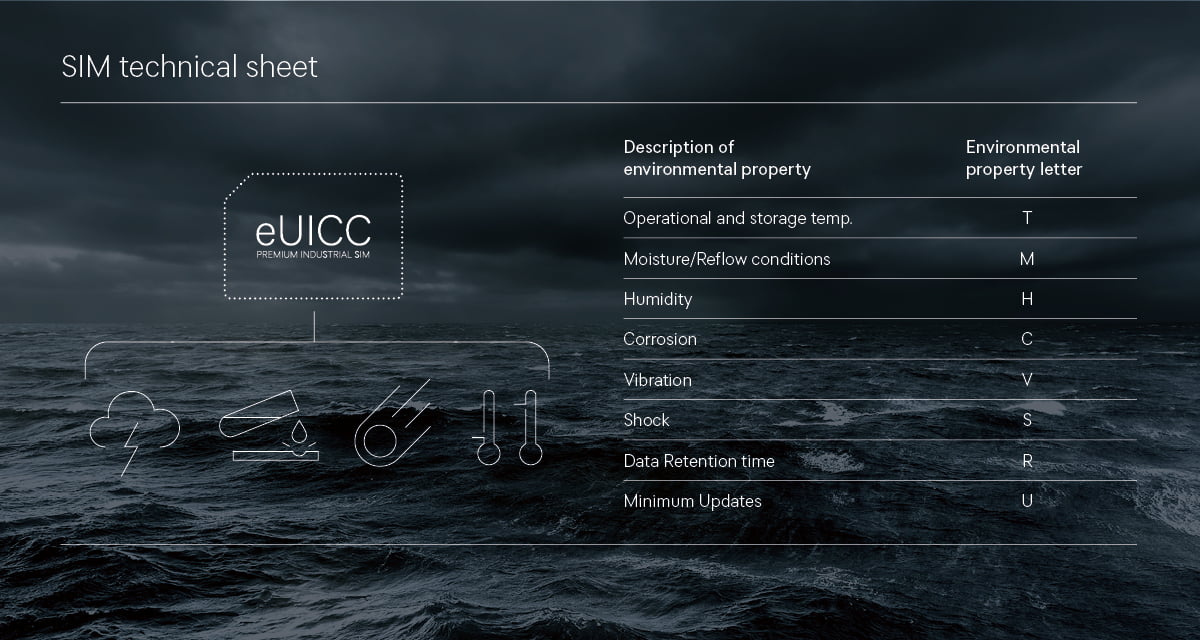This is particularly important for global businesses, logistics (or any mobile solution), and supply chains that require real-time tracking of assets and data.
How does IoT roaming work?
IoT roaming is similar to roaming on your mobile phone but is instead intended for IoT devices. It functions through pre-defined partnerships and roaming agreements with Mobile Network Operators (MNOs) across the globe, and these agreements allow IoT devices to connect with other networks when they move beyond their home network’s coverage area. IoT roaming does this using one SIM card, along with regular network technologies and services, and IoT-specific technologies such as LTE-M and NB-IoT.
Each of these technologies are tested specifically before they are launched and made available to IoT customers. The availability is defined from the visited networks perspective, meaning if the network does not support VoLTE the device has no possibility to use this technology.
The Multi-International Mobile Subscriber Identity (IMSI) SIM card is a key component when it comes to IoT roaming. The IMSI SIM allows users to access multiple networks in different geographical locations. And unlike traditional SIM cards, multi-IMSI SIMs can host several IMSIs, each corresponding to a specific MNO’s network connection. This allows devices to switch between networks automatically, without manual configuration.
Benefits of IoT roaming
IoT roaming brings a host of benefits to your IoT solution, particularly if you have a global and/or mobile deployment, including:
• Streamlined global deployments
IoT roaming enhances and simplifies the deployment of IoT devices across regions and borders. By automatically connecting to the best available network, you can reduce the complexities associated with global deployments and management of them.
• Global coverage
IoT roaming allows your devices to maintain communication and data transfer capabilities, no matter where your devices are deployed. This global coverage ensures that your devices will not experience connectivity gaps.
• Reduced costs & complexity
Utilizing a single SIM card for multiple network connections can consolidate costs, particularly when it comes to data plans. IoT roaming also removes the need for manual network configuration, streamlining your deployment.
• Reliability & redundancy
Multi-IMSI SIM cards provide backup connectivity options, which are used when a network is not available or when the devices is outside its home network coverage area, giving better reliability and redundancy.
IoT roaming challenges… and solutions
Any technical solution will have its challenges, and IoT roaming is no different. Here are some you may face and how to address them:
• Latency
IoT roaming can introduce latency, mainly because of the need to backhaul data to the home network. A higher network latency will require more power for transmitting data, leading to increased power consumption and reduced battery life. Consider this potential issue when planning your global IoT deployment, particularly for latency-sensitive applications, such as healthcare monitoring or smart home security systems. Ensure that you use the best technology and components available to minimize challenges as much as possible. Also, 5G promises to deliver faster speeds, lower latency, and greater capacity than existing networks, which will be essential for supporting the growing number of IoT devices.
• Costs
Fees around data transmission – aka roaming charges – are most likely to be more costly when compared to localized IoT deployments, similar to the situation when you use your phone as a consumer. Your connectivity provider has to make special agreements with other network providers to allow you to use their networks. The cost in these agreements can differ quite a lot from region to region, and even within a region.
Many operators provide a Connectivity Management Platform (CMP) to oversee your cellular connections. These should offer smart automation rules and functionality that help you keep connectivity costs under control during the device life cycle.
• Regulations and roaming restrictions
Regulatory complexity continues to hamper IoT deployments in some countries, where local rules like data residency, data sovereignty, and roaming restrictions can create barriers.
Some countries have strict regulations and may prohibit permanent roaming, while other countries will block the device when it has been in a country longer then allowed. The main reason for these restrictions is to promote the domestic IoT industry and safeguard local interests.
To address this problem, you can either partner with a local supplier or find a connectivity provider that has done so. For enterprises requiring direct integration with local MNOs to maintain connectivity, this process can be both financially burdensome and time intensive.
IoT roaming is an area that we know has a big impact on your business both from a cost and a strategic perspective, so please feel free to get in touch to discuss this further.























